At one time, Gianna Trotter’s path to show jumping would have seemed improbable. The now 27-year-old rider from Brick, New Jersey, spent much of her childhood in hospitals, navigating recovery from a traumatic brain injury that necessitated surgery, physical and occupational therapies, and would cause lasting hemiparesis, limiting the motor function on one side of her body.
But when Trotter recounts her life story now, she sees the connective thread. There was the trail ride on a vacation that had her itching to start riding. The first lesson on a gelding who would become her beloved heart horse. The string of meaningful moments that, with hindsight, Trotter traces all the way back to her car accident as a 1-year-old.
“The car caved into the left side of my brain, which affects the right side of my body,” Trotter said. “To this day, my type of TBI [causes] limited function and increased muscle tone. So I have a bent wrist, bent arm. I don’t have heel strike. I don’t go heel, toe; I go toe, heel on my right side, just because my hamstring is so tight.”
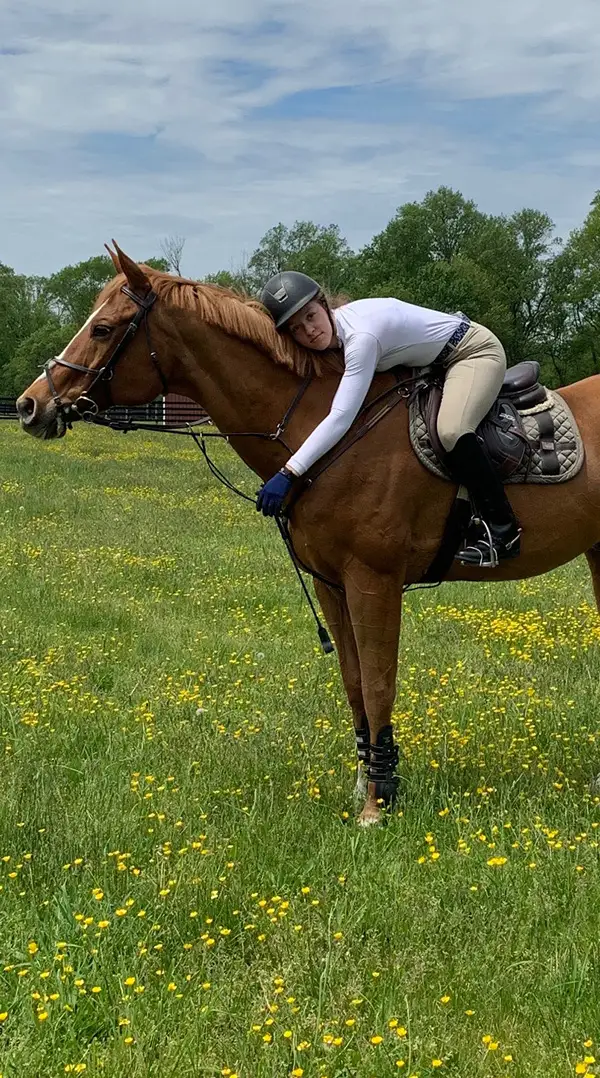
Her TBI impacted the way that Trotter would move through life, and also shaped the way she would see her purpose. When she reflects on the accident that changed her trajectory, she recalls a Bible verse.
“‘What you intended for evil, God intended for good,’” she said. “So things in this world happen—like I was in a car accident—but God’s the one that allowed it to turn into a beautiful story.”
Trotter learned how to share her story as a child growing up in and out of hospital settings and outpatient therapies, including hippotherapy to help her develop her balance. In 2011, she was chosen as New Jersey’s Children’s Miracle Network Hospitals Champion, and she began public speaking about her journey, hoping to inspire other children with disabilities to live beyond others’ limiting expectations.
It’s now a journey she shares through her social media, a platform she uses to show other young people with disabilities what is possible.
Trotter began to cultivate that vision for her future as a teen. After a trail ride on a family trip to Hawaii, she decided that—whatever people thought she was capable of in the saddle—she wanted to learn to canter. She returned to New Jersey and enrolled at a local barn, riding a horse named Ziggy for her first lesson. She had an instant connection with the 19-year-old Appendix gelding.
“I rode him once a week, but I would go out to the barn probably five times a week, just to hang out with him,” Trotter said. “Even though he wasn’t my horse there, I just genuinely fell in love. It was literally love at first sight. I just felt like he could take care of me.”
When Ziggy came up for sale in April 2018, only eight months after Trotter began lessons, she knew she needed to buy the horse that had become her best friend and helped her reach her first goals—cantering, then jumping.
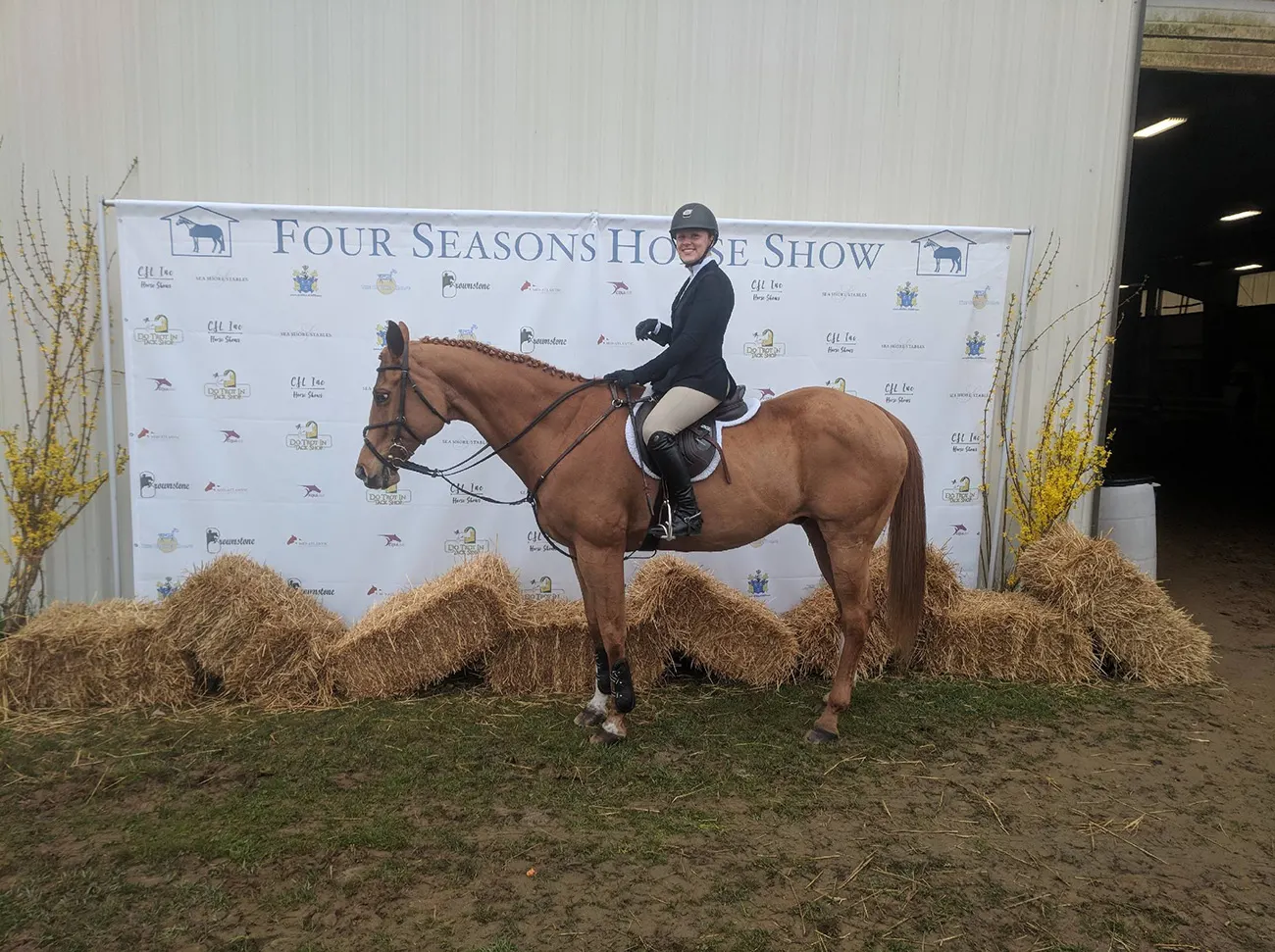
“I bought him to be a pet. There was such a connection,” she said. “I didn’t even know horses had the capability of jumping. This is why I think that everything’s meant to be; my horse and my story now is all about show jumping. I didn’t even know what it was—what was that, seven years ago? And now that’s all I want to.
“I just went to learn how to canter, and then my trainer at the time was like, ‘Go over this crossrail,’ ” she continued. “I think it was just in the trot, but the adrenaline that I got from it was just incredible.”
As Trotter set her sights on new goals, she began training under Neal and Elisa Shapiro at Hay Fever Farm in Gladstone, New Jersey. By that time, she had developed a system of riding and adapted her tack to accommodate her hemiparesis through a process of trial and error with Ziggy.
ADVERTISEMENT
She first used rubber bands to keep her foot in the stirrup; later, she found magnetic stirrups to be even more effective. Trotter holds reins she’s shortened and adapted to buckle to a martingale so they can’t easily slide up the horse’s neck. Using only her left hand, she could neck rein Ziggy, piloting them around their first 0.90-meter show jumping classes in 2019. When she began competing in regular show jumping classes using her adaptive aids, she found particular satisfaction in defying other riders’ expectations.
After one successful show, an acquaintance praised Trotter’s performance—but added, “I didn’t think you could do anything.” The comment stung, but it also fueled her determination to prove how much she was capable of doing.
Unfortunately, that journey wouldn’t continue with Ziggy, who died on Dec. 31, 2020. Trotter said he had been his quiet, stoic self to the end, so much so that no one knew he was ill until the day before his death. She was grateful to make it to the barn in time to say goodbye.
“I believe that because he loved me so much—and we loved each other so much—that he waited for me to get there,” she said.
After losing Ziggy, Trotter was committed to continuing her show jumping goals, but didn’t expect the same emotional connection she had in her partnership with Ziggy. With lots of challenging practical requirements for a new horse to accommodate her disability, she began her search resigned to the fact that it would probably be slow going.
“I have a longer list of things that I need—more than an able-bodied rider does in a horse,” Trotter said. “I was prepared to wait years to get another horse, because I didn’t see that happening anytime soon. But the first viewing we went on—Neal and I—was the one we bought, and the one who’s honestly heaven-sent.”
Justin Case was a horse Trotter spotted in a DreamHorse ad in spring 2021. “Casey” didn’t have many miles on him yet, and his competition experience was limited to a ground-pole hunter class at an unrated show. But Trotter was instantly comfortable on the chestnut Appendix gelding that reminded her so much of the horse she’d just lost.
“Same mentality, same height, same height, same color, same markings, same breed—everything,” she said of Casey’s similarities to Ziggy. “And this horse just took me around.”
So much of Trotter’s needs in a horse came down to personality, and Casey had it. He was willing and trainable from the start.
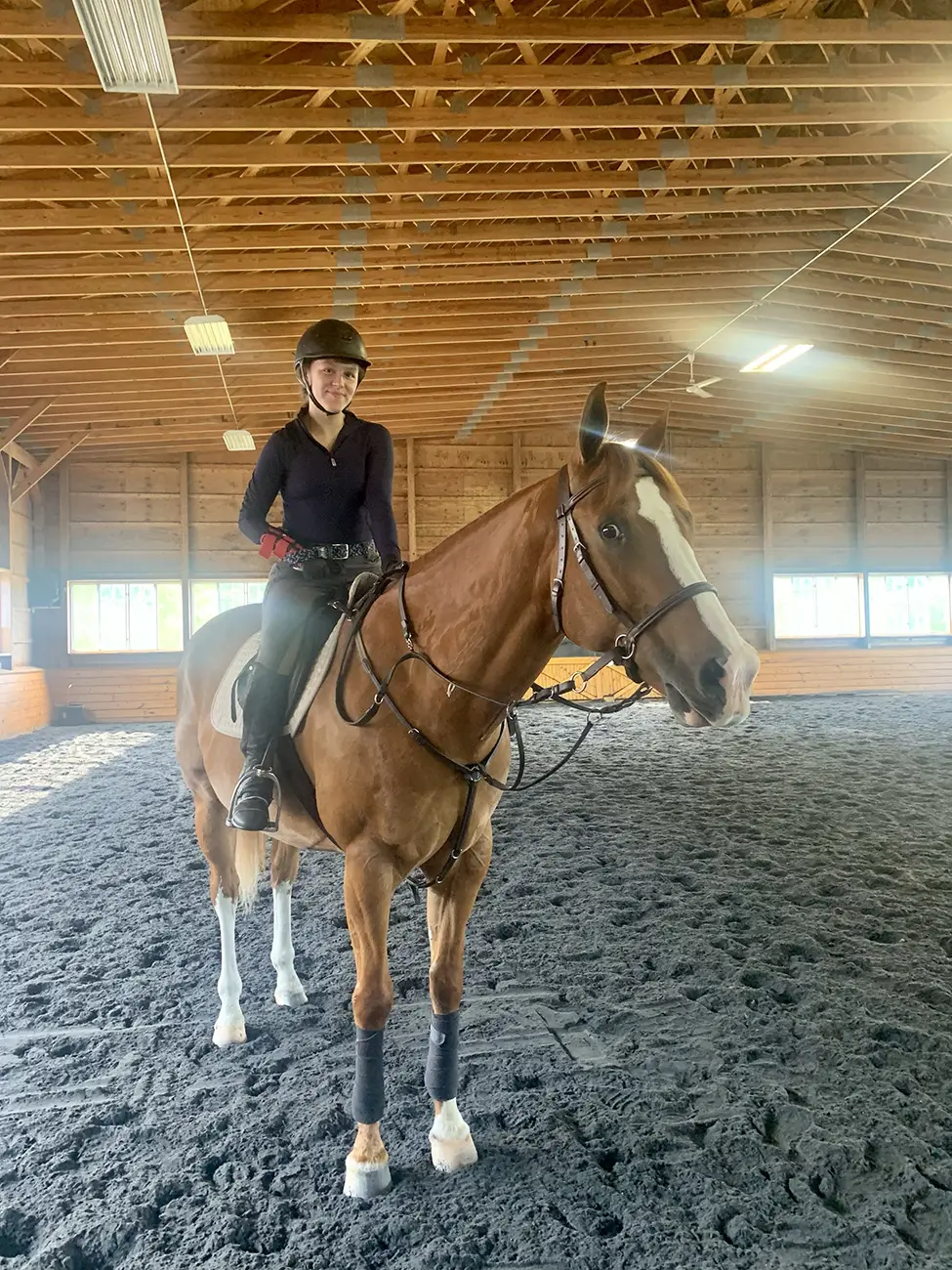
“He’s Appendix: brain of a Quarter Horse, athleticism of a Thoroughbred,” Trotter said. “So he caught on really fast, and he’s just a safe guy. He’s someone that’s not going to spook, not going to take off or be dangerous. He’s just a saint in every situation.”
Trotter credits Casey’s level head, as well as her education with the Shapiros, for her confidence show jumping. “An able-bodied rider can be more restricted with fear than a para rider being restricted with a disability,” she said.
Having the right horse for the job allowed her to try new things, like traveling to the World Equestrian Center in Ocala, Florida, for the 2022 show season, competing Casey in the 0.65- and 0.70-meter jumper classes.
ADVERTISEMENT
In 2024, the pair joined Para Show Jumping North America, a group of riders with disabilities who advocate for the official recognition of para show jumping as a designated sport, through education and demonstrations at events including BreyerFest and the Kentucky Three-Day Event. At the 2024 BreyerFest, Trotter and Casey participated in a showcase of para show jumping to highlight the event’s theme, “Against All Odds.”
Recently, Trotter says that her riding has been reinvigorated by coaching from legendary show jumper Anne Kursinski. Trotter says she took a swing when she reached out her for lessons. Kursinski says that she had seen Trotter compete locally and knew her longtime trainers, the Shapiros. Elisa spoke highly of Trotter as a student, and Kursinski was delighted to see her work ethic first hand.
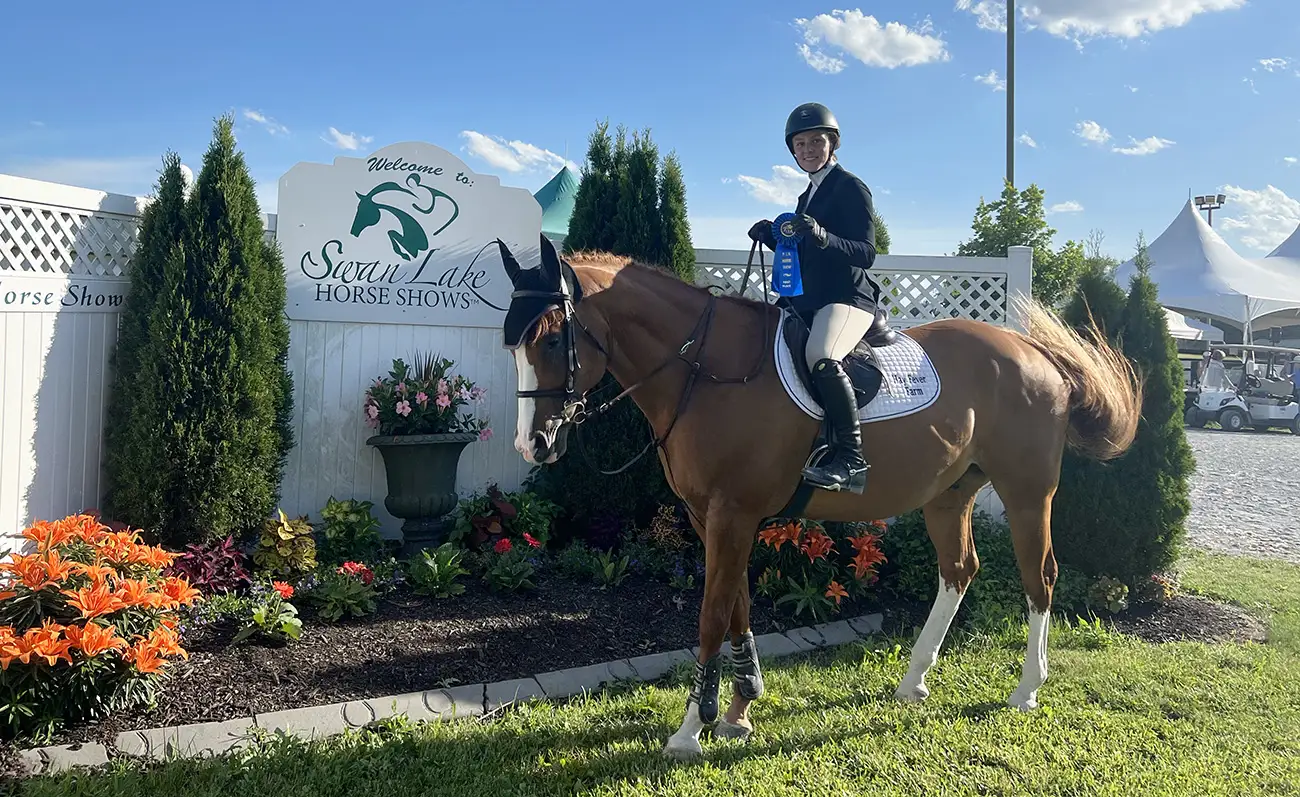
“She really wants it,” Kursinski said of Trotter. “Some things that I’ve done with her maybe were a little bit new. But she asked questions; she’s interested. She just tries so hard, from one lesson to the next, one school to the next. So that part of her is really fun.”
Kursinski was also impressed with Trotter’s athleticism in the saddle and the ways in which she had thoughtfully adapted her riding to do the most with her physical limitations.
“She really is very talented. She has a very good foundation,” Kursinski said. “She has a good position and she’s fun to work with because she wants it, which is great as a teacher. I treat her like everybody else, and she wants that.”
Trotter said that training with Kursinski has been a great fit. She and Casey were ready for Kursinski’s sharp eye, and both are benefiting from her rigorous coaching. Trotter said of her first days training under the Olympian, “I loved it, and she was so attentive. And that’s how I was brought up.
“Being that I was raised by Neal Shapiro and Elisa Shapiro, I feel like I definitely needed that again,” she continued. “That honestly prepared me to be like, ‘OK, I can’t get upset if I am going to get critiqued, because I’m literally paying for coaching.’ So I just prepared my heart a little bit more.”
Trotter feels that Casey is flourishing under their current training, and Kursinski is equally impressed with the horse. She also notices the way Trotter takes full ownership of Casey, grooming and tacking him, and spending time hacking around for fun when they’re not in lessons.
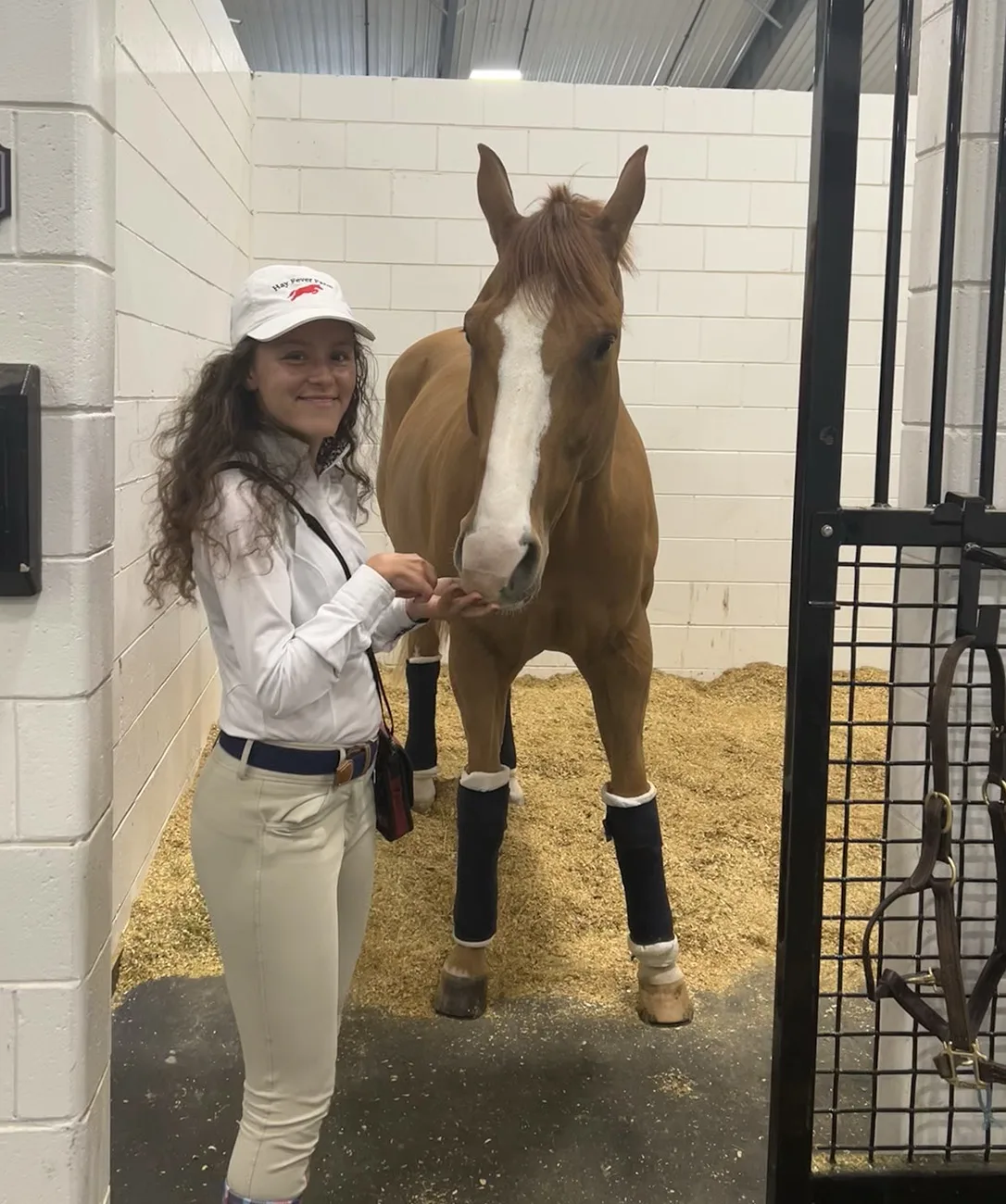
“She has an adorable horse—her horse is just fabulous,” Kursinski said. “He just has a wonderful character. I do think the bond between horse and rider is so important at any level.
“Even for my big riders, you don’t just get on and go to the horse show,” she added. “You’ve got to know your horse. So I think that connection helps probably both of them; I think it’s marvelous for both of them.”
For Kursinski, the experience of coaching a show jumper with physical disabilities has been a reminder of how a solid foundation benefits riders of any ability. She’s impressed with the way Trotter is able to use her seat to compensate for the weakness in her leg. Both Kursinski and Trotter are excited to tackle their first show together.
“The next thing will be really going to the show and putting all these things that we’ve been working on together,” Kursinski said. “Her focus, her eyes, [and] not just racing around—getting the correct numbers, and doing all those things with a little show pressure.”
Whether piloting Casey one-handed in the show ring, or answering questions about her riding on social media, Trotter appreciates each opportunity to be an ambassador for equestrians with disabilities. She’s not sure exactly how her story will unfold, but she knows the overall message.
“I’ve been public speaking since I was 12 about my disability,” Trotter said. “The funny thing about God is he took that same exact message—where my message has always been, ‘anything is possible’—and he put it on a platform that allowed me to demonstrate what I was saying. Now there’s a physical aspect of it, instead of just words.”














